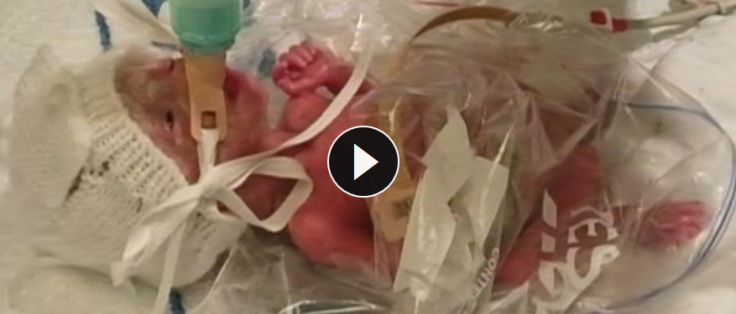Preemie Baby, Pixie, Survives Birth After Doctors Use A Sandwich Bag To Keep Her Warm

The World Health Organization reports that three-quarters of preterm births can be saved with current, cost-effective interventions. And one of these interventions includes a plastic bag.
ABC News reported that Pixie, a newborn girl named for her tiny size, was delivered three months early via cesarean section after she stopped developing in utero. Pixie's mother Sharon Grant explained that her placenta wasn't feeding her baby properly "and the umbilical cord wasn't working well." If Pixie had stayed inside her mother, she would not have survived, Grant's doctors said. But even the C-section was difficult, because doctors were unsure about Grant's ability to go through with the surgery — her blood pressure was very high.
"The birth was really stressful, I didn't know if she was going to survive," Grant added. "They let me put some music on in the operating theater…they got my blood pressure down and that's when they put her in a plastic bag."
Pixie weighed in at just over 1 pound, and doctors at Derriford Hospital said she was among the smallest infants they had ever cared for. But for babies born under 3.3 pounds, regulating their body temperature with sandwich bags is a standard, widely-recognized procedure.
Dr. Giles Richardson, a neonatology consultant at Plymouth Hospital MHS Trust, explained that placing a "wet newborn infant's body and limbs" into a plastic bag, and then under a heater to create a greenhouse effect is "the most effective" ways to maintain body temperature after birth.
Pixie survived, and is now thriving at home with her mother.



























